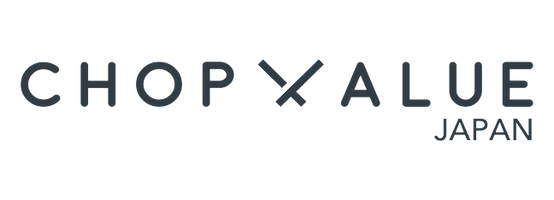カーボンフットプリントの観点におけるChopValueの強み
今、多くのブランドが消費者の声を受けて、サステナビリティへの取り組みを始めています。しかし私たちにとって、それは市場のニーズに応えることではありません。ChopValueのDNAには、大切な資源の利用に対する責任が刻まれているからです。
私たちの事業は、創業当初から循環型社会の考え方に基づいています。目指すのは、環境への負荷を最小限に抑えた持続可能なものづくりです。
素材とライフサイクルの比較分析
ChopValue特製材 vs. 従来の家具資材
ChopValue特製材のCO2排出量は、家具によく使われる木質複合材や無垢材と比べてどのくらい少ないのでしょうか?資源、製造工程、物流、ライフサイクルの4つの分野で比較してみましょう。
製品:





ChopValue特製材は、人にも地球にもやさしい素材です。
高機能素材で作られた製品は、木製家具のために伐採される木の本数を減らすことにつながります。
森林伐採を防ぐだけでなく、割り箸に含まれる炭素を封じ込めることで、廃棄物が埋め立て地に行った場合に発生する排出を防ぎます。

製造工程は可能な限りサステナブルに設計されています。
二酸化窒素排出を抑えるだけでなく、原材料の処理に必要なエネルギー集約型の工程を簡略化することで、環境への負荷を大幅に軽減しています。
また、パーティクルボードやファイバーボード、無垢材の製造で一般的に使用される洗浄水は使わず、粉じんの抑制やのこぎり刃の冷却といった工程も行っていません。

大きなインパクトを生み出すために、グローバル規模で展開しながら、地域に根ざしたものづくりを実現しています。
輸送と物流は、多くの企業が海外から製品を調達し輸送する際の温室効果ガス排出の主要な要因となっています。
9カ国に展開するグローバルなマイクロファクトリーネットワークと、80ヶ所以上の開発中の拠点を持ち、お客様の地域にできるだけ近い場所で、調達・製造・出荷を行う体制を整えています。

品質やデザインに妥協することなく、持続可能なソリューションを提供しています。
私たちの製品は、オークよりも強く、メープルよりも硬く、長く使えるよう設計されています。さらに、独自のリマニュファクチャリングサービスにより、最大3回まで再生・再利用が可能です。高い耐久性と持続可能性を、ひとつに。
これはどどういうことなのでしょうか?
森林が減少し、埋立地が拡大する今、
循環型素材の活用はこれまで以上に重要です。
ChopValue特製材を従来の家具資材の代わりに選ぶことで、
1立方メートルあたり、
最大16,228kgのCO2排出を抑制できます。
私たちが示すのは、廃棄物の再利用で広がる大きな可能性です。使用済みの割り箸などをリサイクルすればCO2排出量が抑えられるうえ、捨てられるはずの資源を有効活用できます。しかも、その調達から製造、配送までを各地域内で完結すれば、排出量をさらに少なくできるのです。

What does this all mean?
As forests shrink and landfills grow, using circular materials is more important than ever. By choosing ChopValue over conventional commercial materials, you can save up to
-16,228 kg of CO2 emissions per cubic meter.
While wood is a renewable resource, we’re showcasing the massive potential of using waste streams. Recycling materials like discarded chopsticks reduces emissions and makes a better use of resources that would otherwise be wasted. Plus, our hyperlocal manufacturing method cuts down on the carbon footprint even more by sourcing, manufacturing, and distributing locally.
未来を支える、循環型家具
ChopValueはカーボンネガティブで質の高いものづくりを通して、企業のサステナビリティ目標の達成やScope3排出量の削減、地域社会の未来を支えます。
ともに変化を起こし、目に見えるインパクトを生み出しましょう。
* 前提条件:
- - 商業用素材は、ファイバーボード・パーティクルボード・無垢材をそれぞれ1/3ずつの割合で構成しています。
- - 塗装やその他の含有物質は考慮していません。
- - パーティクルボードおよびファイバーボードはスプルース材を原料とし、無垢材の比較基準にメープル材を使用しています。
- - 木質ボード製造工場は、自社または購入した木質廃材を熱利用することでエネルギーを得ています。
- - 無垢材は現地で調達し、ファイバーボードおよびパーティクルボードの原料は海外から輸送されています。
** 注記:
- - 本試算は保守的な前提に基づいており、実際の数値はさらに大きくなる可能性があります。










